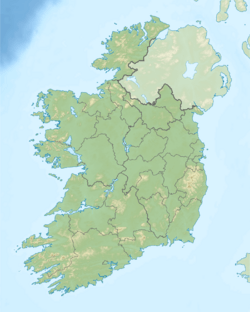Ballynoran Church facts for kids
Quick facts for kids Ballynoran Church |
|
|---|---|
| Ard Colm | |
|
Teampall Bhaile an Fhuaráin
|
|
| 52°21′20″N 7°29′24″W / 52.355605°N 7.490105°W | |
| Location | Ballynoran, Carrick-on-Suir, County Tipperary |
| Country | Ireland |
| Denomination | Church of Ireland |
| Previous denomination | Catholic |
| Architecture | |
| Functional status | inactive |
| Specifications | |
| Length | 18 m (59 ft) |
| Width | 8 m (26 ft) |
| Floor area | 144 m2 (1,550 sq ft) |
| Materials | stone |
| Administration | |
| Diocese | Waterford and Lismore |
Ballynoran Church is an old church from the Middle Ages. It's also a special protected site called a National Monument in County Tipperary, Ireland. This means it's an important historical place.
Where is Ballynoran Church?
Ballynoran Church is located about 5 kilometers (3 miles) west of Carrick-on-Suir. You can find it on the north side of the River Suir.
The History of Ballynoran Church
This church was once known as Ard Colm. This name means "height of the doves." It's a lovely name for a church!
The name Ardcolme was written down in official records in 1306. These records were called the Papal Taxations. They were lists of taxes collected by the Pope's church.
Later, in 1654, the church was mentioned again. This time, it appeared in a survey called the Down Survey. This survey was a detailed map and record of land in Ireland. It helped people understand who owned what land.
What the Church Looks Like Today
Ballynoran Church is a rectangular building. It is made of stone. Today, it no longer has a roof. This means you can see the sky when you look up from inside.
There isn't a public path that leads directly to the church buildings. It's a quiet, historical spot.


